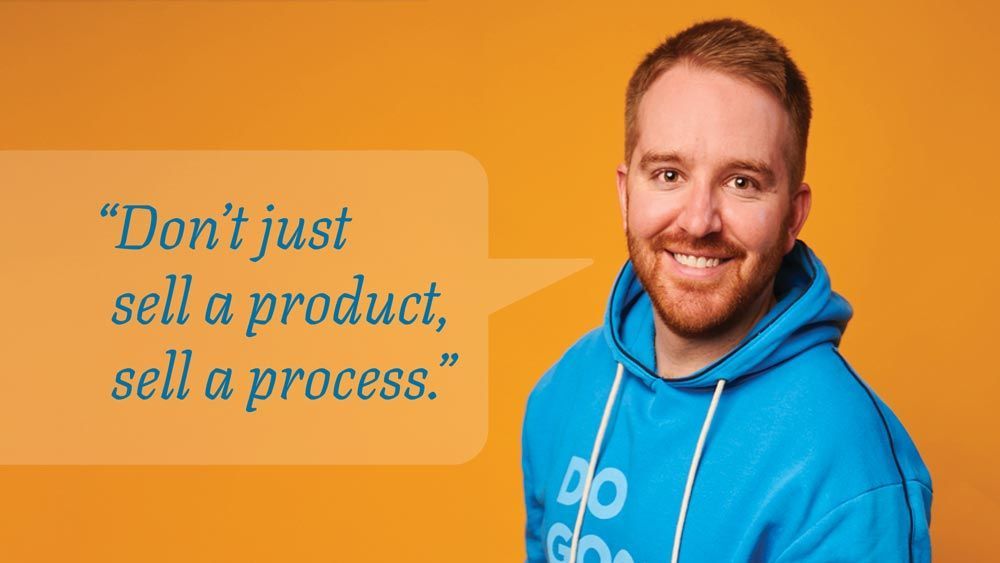How Much Does It Cost to Create and Keep a Customer?
“It’s because we’re short-staffed.”
When you claim staffing causes your customer service issues, you position your company as the victim. This is the one time when your brand should show up as the hero to save the day for the customer.
Vanquish the villain, then return to your role as the guide.
When I first wrote about making it easy for your customers to do business with you and the unconscious marketing signals that brands and companies send customers, I knew I would discover more stories to share. It was a matter of time, and I wasn’t disappointed.
Is it Worth Losing a New Customer Over a Coupon?
My friend shared this story about visiting a local greenhouse and garden center to shop for Christmas decorations for her new home. She mentioned her desire to see this garden store multiple times over the past two to three weeks.
Here’s the conversation she had on her first (and last) visit.
Associate: “Hello! Welcome to our garden center. Can I help you find something?”
Shopper: “Yes, this is my first time here. I’m interested in some of your holiday decorations, and my friends told me about your coupons. Can I get a coupon?”
I should note that the shopper’s friends told her about the brand’s value that means the most to them. The shopper’s takeaway from her friend’s gut feeling about the brand was, “I hear they have great coupons.”
Associate: “Yes, we have coupons, but you’ll have to talk to our floor manager. She’s over there.”
Shopper: (After asking around for the floor manager): “Hi, are you the floor manager? My friends told me about this place, and this is my first time here. I hear you have coupons. Can I get a coupon for my purchase today?”
Associate: “Yes, we have coupons! You’ll have to talk with our digital sales manager. He’s the one who sends out the coupons. I’ll get him for you.”
At least this associate connected the shopper with the right person.
Digital Sales Manager: “Hi, how can I help you.”
Shopper: “Yes, this is my first time here. I’m interested in buying some of your holiday decorations, and my friends told me about your coupons. Can I get a coupon?”
The shopper gave this associate a vital clue: Despite how difficult it’s been to get a coupon, she’s moved from interest to intent to buy.
Digital Sales Manager: “Yes, we have coupons. We send out weekly emails with specials, exclusive offers, and coupons. They’re awesome. You can get coupons when you sign up for our email list on our website.”
Shopper: “Great, I can do that when I get home, but I’m here now and want to make a purchase. Can I get a coupon?”
Digital Sales Manager: “The coupons come through email.”
Shopper: “But I’m here now and want to make a purchase. I can’t get a coupon?”
Digital Sales Manager: “Correct. The coupons come through email. No, you can’t have one for today.”
Shopper, to herself: “Fine. I’ll take a photo, look at the product name, and look online. Somebody made the decorations I want to buy, and I’m sure this isn’t the only place that sells them.”
What’s the Cost of Losing a Customer?
Todd Duncan, author of The $6,000 Egg: The 10 New Golden Rules of Customer Service, tells this story that inspired his book after asking for a $2 egg for his wife’s cheeseburger. (If you’ve never had an egg on your cheeseburger, you’re missing out on a culinary delight).
“So, let me make sure we are tracking here. I spend at least $6,000 a year at your restaurant, and I have one simple request for a two-dollar egg for my burger. You are telling me you can’t make that happen because you only order enough eggs for your waffle dish?” She said, “Yes.”
I said, “So a one-time visitor who orders a waffle for fifteen dollars is more important to you than a $6,000 customer who comes in at least four to six times a month, but for whom you can’t figure out how to get an egg?” Her response was: “We have to be able to serve the dishes we advertise, and we usually run out of the special ones. If we run out of eggs, we can’t serve the waffle.”
I asked, “As a manager, wouldn’t you rather be one egg short and throw away a waffle that probably costs you fifty cents to make than throw away a loyal customer who brings you $6,000 a year?” She said, “It’s our policy.”
Bad Policy Empowers Good Managers
My friend planned to spend $120.00- $200.00 at the Ohio-based garden center. In a thriving economy, $200 is small potatoes to some businesses. To companies who continue to struggle in a weak Biden economy — especially in retail — a portion of that revenue pays overhead and profits.
A $10 off coupon costs the retailer $10 plus credit card fees on a $70 sale. Their choice to not give a coupon to the shopper costs this retail store a minimum of $120 in revenue and a customer.
She’s going to tell her friends about the experience (who are current customers of the Garden Center) who typically spend several hundred dollars more on visits.
Her feeling about the brand went from “I hear you have great coupons” to “You are making it difficult to do business with you.”
Some of my neighbors call this the, "I have money and want to spend it. Why won’t you help me ?” quandary.
The brand value chain (what this brand means for consumers and what their commitment to purchase means to your bottom line) is rapidly declining. At a minimum 10x decline, the $120 in revenue turns into $1,200 in income and lost value for their brand’s reputation and trust in business.
We all know coupons are an incentive to get customers in the door. Larger discounts should be for your best and loyal customers (who participate in your loyalty program). Coupons can be an effective incentive to win new customers — but only if you let a potential new customer have one when they ask for one!
The market is competitive. I heard my friend went to a competing garden center and spent over $2,000 on a new Christmas tree, wreaths, and accessories for her home.
Don’t let people walk away because you don’t empower your associates to meet customers’ needs. Keep up and be aware of how consumers spend their money and how their experience affects your brand.
Peter Drucker famously said, “The purpose of business is to create and keep a customer.”
When you align your brand strategy (to create customers) with your business strategy (to keep customers who want to buy) in a comprehensive and integrated way, you can meet customers where they are so your brand and business grow.
Do you have a hard time explaining what your company does or why your brand matters to people?
If you struggle to grow your business, you’re not alone. Aespire can help you create a clear message and brand that helps you grow your business. Contact us today for a consultation with a StoryBrand Certified Marketing Guide.
Get a Free Comprehensive Marketing Assessment
Stop hoping your marketing will sort itself out.
- Complete this free assessment in 15 minutes.
- Review your custom report (and schedule a 30-minute review) to diagnose what’s happening.
- Create an action plan to get your marketing back on track.







